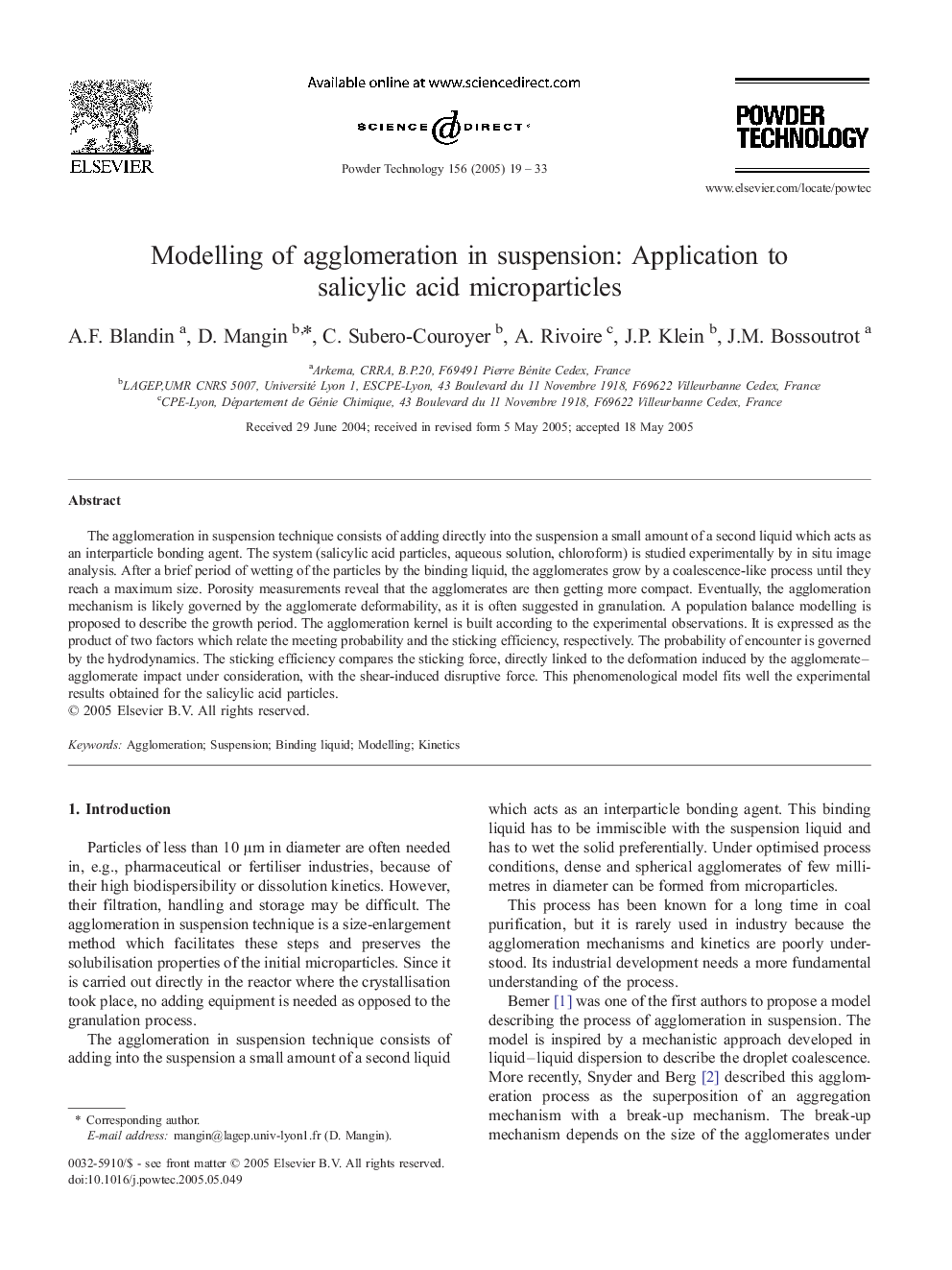| Article ID | Journal | Published Year | Pages | File Type |
|---|---|---|---|---|
| 10281010 | Powder Technology | 2005 | 15 Pages |
Abstract
The agglomeration in suspension technique consists of adding directly into the suspension a small amount of a second liquid which acts as an interparticle bonding agent. The system (salicylic acid particles, aqueous solution, chloroform) is studied experimentally by in situ image analysis. After a brief period of wetting of the particles by the binding liquid, the agglomerates grow by a coalescence-like process until they reach a maximum size. Porosity measurements reveal that the agglomerates are then getting more compact. Eventually, the agglomeration mechanism is likely governed by the agglomerate deformability, as it is often suggested in granulation. A population balance modelling is proposed to describe the growth period. The agglomeration kernel is built according to the experimental observations. It is expressed as the product of two factors which relate the meeting probability and the sticking efficiency, respectively. The probability of encounter is governed by the hydrodynamics. The sticking efficiency compares the sticking force, directly linked to the deformation induced by the agglomerate-agglomerate impact under consideration, with the shear-induced disruptive force. This phenomenological model fits well the experimental results obtained for the salicylic acid particles.
Related Topics
Physical Sciences and Engineering
Chemical Engineering
Chemical Engineering (General)
Authors
A.F. Blandin, D. Mangin, C. Subero-Couroyer, A. Rivoire, J.P. Klein, J.M. Bossoutrot,
